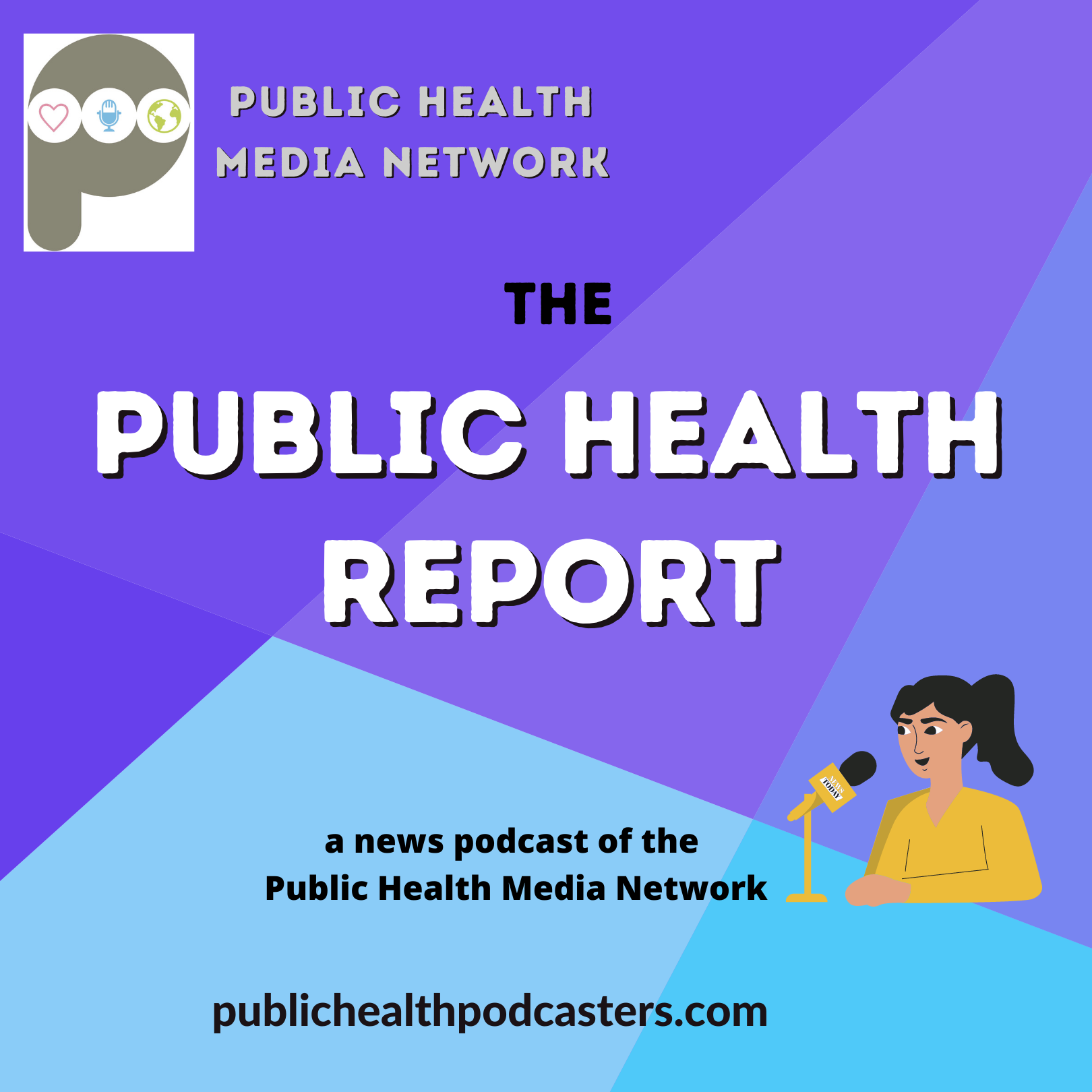Episode 22 with Lizzie Wilson: The Complexities of Childhood Obesity
For our 22nd episode, we’re covering the controversial new practice guidelines for childhood obesity.
The CDC reported that the obesity prevalence for children and adolescents aged 2-19 was nearly 20%[1] from 2017-2020, and a predictive epidemiological study out of the New England Journal of Medicine found that the estimated risk of adult obesity at age 35 for this population could be as high as 57%. If that sounds like a serious cause for concern, that’s because it is. Undoubtedly, childhood obesity is a leading public health challenge. But, what exactly is obesity and what are the health risks associated with it?
References:
Childhood Obesity Facts (n.d.). Centers for Disease Control and Prevention. Retrieved from: https://www.cdc.gov/obesity/data/childhood.html
Ward ZJ, Long MW, Resch SC, Giles CM, Cradock AL, Gortmaker SL. Simulation of Growth Trajectories of Childhood Obesity into Adulthood. N Engl J Med. 2017 Nov 30;377(22):2145-2153. doi: 10.1056/NEJMoa1703860. PMID: 29171811; PMCID: PMC9036858.
Karnik S, Kanekar A. Childhood obesity: a global public health crisis. Int J Prev Med. 2012 Jan;3(1):1-7. PMID: 22506094; PMCID: PMC3278864.
Kirkilas G. (updated 2022). Body-Mass Index (BMI) in Children, American Academy of Pediatrics: Healthy Children. Retrieved from: https://www.healthychildren.org/English/health-issues/conditions/obesity/Pages/Body-Mass-Index-Formula.aspx
Sarah E. Hampl, Sandra G. Hassink, Asheley C. Skinner, Sarah C. Armstrong, Sarah E. Barlow, Christopher F. Bolling, Kimberly C. Avila Edwards, Ihuoma Eneli, Robin Hamre, Madeline M. Joseph, Doug Lunsford, Eneida Mendonca, Marc P. Michalsky, Nazrat Mirza, Eduardo R. Ochoa, Mona Sharifi, Amanda E. Staiano, Ashley E. Weedn, Susan K. Flinn, Jeanne Lindros, Kymika Okechukwu; Clinical Practice Guideline for the Evaluation and Treatment of Children and Adolescents With Obesity. Pediatrics February 2023; 151 (2): e2022060640. 10.1542/peds.2022-060640
University of Michigan (2023). NEW CHILDHOOD OBESITY GUIDELINES MAY DO MORE HARM THAN GOOD, Futurity. Retrieved from: https://www.futurity.org/childhood-obesity-kids-health-2873042-2/
Radde K. (2023). New childhood obesity guidance raises worries over the risk of eating disorders, NPR. Retrieved from: https://www.npr.org/2023/02/15/1155521908/eating-disorder-obesity-guidance-risk-weight-loss
López-Gil JF, García-Hermoso A, Smith L, et al. Global Proportion of Disordered Eating in Children and Adolescents: A Systematic Review and Meta-analysis . JAMA Pediatr. Published online February 20, 2023. doi:10.1001/jamapediatrics.2022.5848
Skerrett P. (2013). Overweight and healthy: the concept of metabolically healthy obesity, Harvard Health Publishing. Retrieved from: https://www.health.harvard.edu/blog/overweight-and-healthy-the-concept-of-metabolically-healthy-obesity-201309246697
University of Michigan (2023). NEW CHILDHOOD OBESITY GUIDELINES MAY DO MORE HARM THAN GOOD, Futurity. Retrieved from: https://www.futurity.org/childhood-obesity-kids-health-2873042-2/
Learn More About the Public Health Podcast and Media Network: publichealthpodcasters.com
Support our work for public health communications and career development, by subscribing to our newsletter: https://phpn.substack.com/subscribe?
Transcript
The Complexities of Childhood Obesity
By Lizzie Wilson
Hey there, I’m Lizzie Wilson, and it’s great to be back jumping into another episode of the Public Health Report! For our 22nd episode, we’re covering the controversial new practice guidelines for childhood obesity.
% from:Obesity is a chronic disease that can generally be determined using the body mass index (BMI) as a screening tool, which is calculated as body weight in kilograms, divided by the square of height in meters. Because children are growing and developing, doctors use BMI percentiles to assess the growth of a child in relation to other children of the same age and sex. Based on that percentile, a child’s weight can be classified as underweight (below the 5th percentile), healthy weight (5th to 85th percentile), overweight (85th to 95th percentile), obesity (95th or greater percentile), or severe obesity.
In addition to food, sleep, activity level, social determinants of health, and other environmental factors, genetics can play a role in the development of obesity. The American Academy of Pediatrics (or AAP) reports that obesity increases the risk of other chronic diseases, including hypertension, type II childhood diabetes, and chronic joint pain. Plus, obesity is associated with poor mental health outcomes, social isolation, and low self-esteem driven by weight stigma and bullying.
With this background in mind, the AAP developed clinical practice guidelines for childhood obesity in January. Primarily, they recommend intensive health behavior and lifestyle therapy including exercise and behavioral changes, and nutrition coaching for at least 26 hours. Additionally, the AAP advises healthcare providers to offer weight loss medication to children with obesity ages 12 and older, and consider bariatric surgery for children 13 and older with severe obesity. The rationale for their guidance is that, because overweight and obesity in childhood predict obesity and related health complications in adulthood, we should take a lifecourse approach to treatment, starting aggressively in early childhood.
These are very serious steps, and yet childhood obesity is a serious problem. So, where does the controversy lie?
Well, there are many controversies, but I’ll briefly touch on a few of them:
1st: As I mentioned earlier, social determinants of health play a role in the development of childhood obesity, and structural racism puts BIPOC children at a heightened risk of experiencing obesity. Kate Bauer, associate professor of nutritional sciences at the University of Michigan School of Public Health points out that social safety nets in this country act as a Band-Aid. For example, when food insecurity is identified by providers, they may help patients gain access to food assistance services. However, they do not address the underlying issue that low SES families, particularly BIPOC families, frequently aren’t paid a living wage and food stamps are insufficient.
And here’s the thing: these treatment guidelines are often not covered by insurance, and they require an extensive time-commitment by parents and their children, meaning that low-SES families will not have the same access to care as high income families.
2nd: Eating disorders - To reduce weight stigma, the AAP advises healthcare providers to ask permission before discussing weight and/or BMI, using person-first language, and using culturally-appropriate neutral language. However, the focus of the AAP’s guidelines is on lowering BMI, rather than improving health (including mental health), and certified eating disorder specialist, Dr. Kim Dennis, says that classifying children with the chronic disease at a young age could further stigmatize and increase the risk of disordered eating habits. And, according to a meta analysis published this year by Dr Jose Francisco Lopez-Gil, one in five children already display disordered eating habits –and these numbers are larger for those with higher BMIs.
Some eating disorder specialists believe that obesity should not even be classified as a disease, because it focuses on weight rather than health, and it is indeed possible to have obesity and be metabolically healthy. Instead, they advise doctors to get improved education on eating disorders, and to focus on treating specific health issues, rather than weight.
3rd: Dr Bauer again points out that it would be naive to think that these guidelines would eliminate stigmatizing weight-based beliefs in children, their parents, or their practitioners. Care will be stigmatized for children with obesity, which again can cause harm. Instead of focusing on medications or surgery, which may have long-lasting and unknown health implications, Dr. Bauer recommends channeling attention towards improving children’s mental health, making exercise fun, reducing screen time when it makes us feel bad, and becoming more intune with our bodies when we eat.
After researching childhood obesity, one thing is obvious: Childhood obesity is a complex, nuanced, and sensitive issue. And it’s unclear whether the AAP’s childhood obesity guidelines hit the mark. What do you think?
That is it for today’s episode, thank you so much for listening! I hope this episode can help inform your opinion of the American Academy of Pediatrics' new childhood obesity guidelines. Tune in next week to hear what else is going on in the world of public health. You can follow our podcast and like this episode wherever you’re listening from, and please visit us at publichealthpodcasters.com where you can build connections with other public health professionals through our career network membership, as well as access our other official PHPN pods.
I’m Lizzie Wilson, thanks again for listening!

